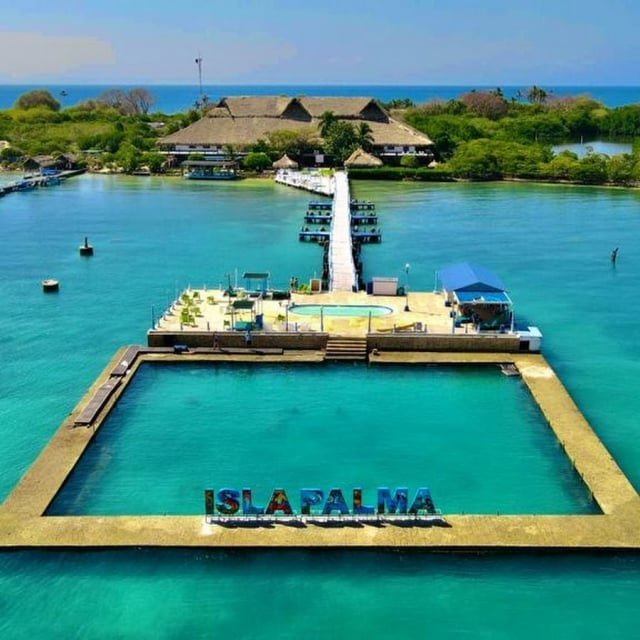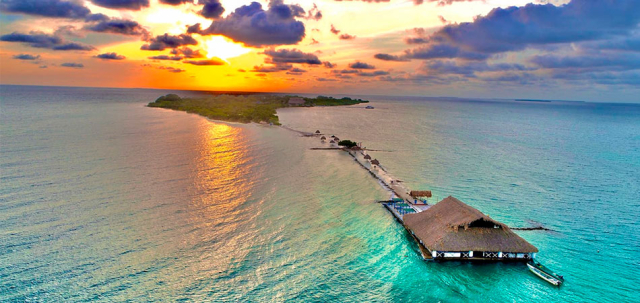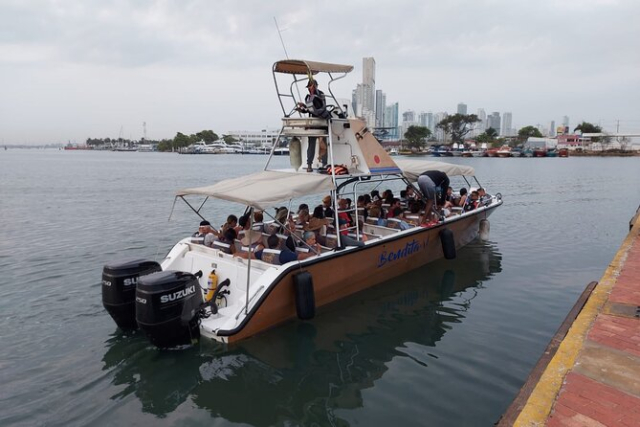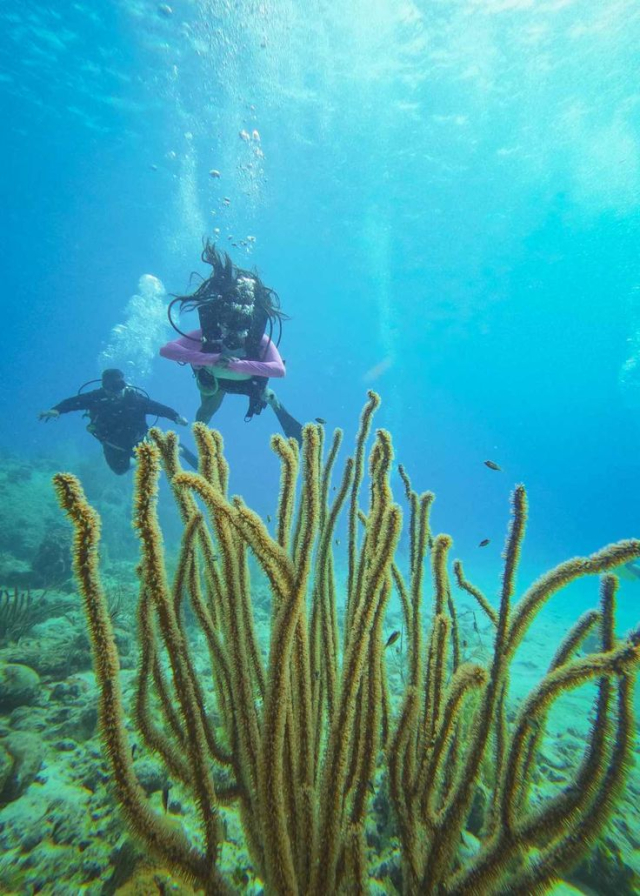Located in the heart of the Colombian Caribbean, Isla Palma is one of the most charming and exclusive destinations in the San Bernardo Archipelago. Known for its crystal-clear waters, white sand beaches and an atmosphere of absolute tranquility, this small island is the ideal place to disconnect from the hustle and bustle of the city and immerse yourself in a natural paradise. Its charm lies not only in its dreamlike landscapes, but also in its rich biodiversity and the unique experiences it offers.
The island is part of a group of ten small islands that make up the archipelago, located off the coast of Sucre and close to the famous Barú Island. Despite its small size, Isla Palma is a destination that surprises with its diversity of activities and the possibility of enjoying an almost virgin natural environment. Here, nature and comfort combine to offer an unforgettable experience to every visitor.
The San Bernardo Archipelago, of which Isla Palma is a jewel, has become a popular destination among those seeking a balance between adventure and relaxation. This place stands out for its commitment to environmental conservation, being home to diverse marine and terrestrial species, and offering a unique experience of sustainable tourism. For those wishing to explore the magic of the Colombian Caribbean, Isla Palma is a perfect starting point.
If you are looking for a destination that combines natural beauty, tranquility and memorable activities, Isla Palma should be on your list of upcoming adventures. This hidden paradise promises to captivate your senses and leave you with indelible memories of a place where time seems to stand still.
You may also be interested in: Cartagena vs Santa Marta
Location

Isla Palma is located in the Colombian Caribbean, within the Corales del Rosario y San Bernardo National Natural Park. This group of islands is located off the coast of Sucre, approximately 80 kilometers southwest of Cartagena. With just a few hectares in size, Isla Palma is one of the smallest in the archipelago, but its charm and exclusivity make it a highly appreciated destination for travelers looking for a unique experience.
How to get there from Cartagena?

Getting to Isla Palma from Cartagena is an experience that begins from the moment you board a boat or catamaran at the dock of La Bodeguita. The trip takes approximately two hours and offers spectacular views of the Caribbean Sea and the archipelago. It is also possible to hire private transportation services that include personalized tours and stops at other islands in the archipelago.
For those looking for a more luxurious option, there are private boats and yachts that offer an exclusive and comfortable journey. It is important to plan your trip in advance, as places on the boats tend to fill up quickly, especially during the high season.
How to get there from Tolú?

Another alternative to get to Isla Palma is to depart from the municipality of Tolú, located in the department of Sucre. From the dock in Tolú, you can board a boat that takes approximately 45 minutes to reach the island. This trip is much shorter compared to the journey from Cartagena and offers a more comfortable option for those who are in this region.
In Tolú, there are several local companies that offer sea transportation services to the islands of the San Bernardo Archipelago, including Isla Palma. These boats usually operate on set schedules, so it is recommended to arrive early to guarantee a spot. In addition, this option allows you to enjoy a more local and authentic atmosphere before arriving at the paradise that awaits you on Isla Palma.
You may also be interested in: San Bernardo Archipelago
What to do in Palma Island?

Activities on Palma Island are as diverse as they are exciting. From exploring its paradisiacal beaches to venturing into water activities such as snorkelling and diving, there is something for everyone. The island is also ideal for those looking to relax, with hammocks facing the sea and massages under the shade of palm trees.
One of the island's main attractions is its marine life. The surrounding waters are home to colorful coral reefs and a variety of tropical fish species, making it an ideal destination for snorkeling and diving enthusiasts. Additionally, visitors can enjoy kayaking, paddleboarding, and boat tours to explore the surrounding archipelago.
For those who prefer land-based activities, Palma Island has ecological trails where it is possible to observe native flora and fauna, as well as learn about the conservation efforts carried out in the region.
Where to stay?
Although Isla Palma is small, it offers various accommodation options ranging from rustic cabins to boutique hotels. One of the most popular alternatives is the Hotel Isla Palma, which combines comfort and sustainability in a unique setting. This accommodation blends perfectly with the natural landscape and offers all the necessary amenities for an unforgettable stay.
Another option is to stay on nearby islands, such as Isla Múcura or Isla Tintipán, and take day trips to Isla Palma. These islands also have a wide range of accommodation, from eco-lodges to luxury resorts, which allow you to enjoy the archipelago in all its magnitude.
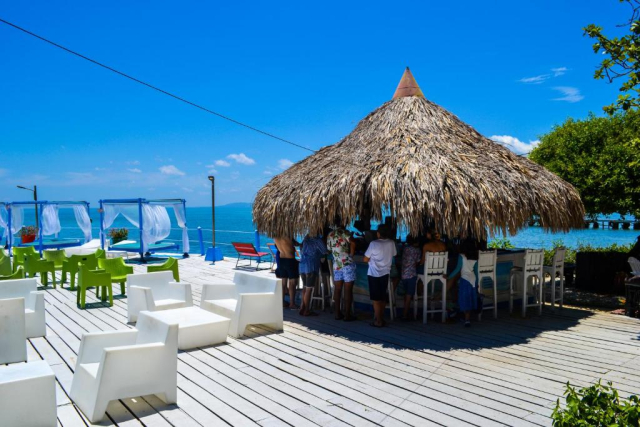
You may also be interested in: The best beaches in Colombia
Isla Palma is a destination that captivates with its natural beauty, tranquility and the possibility of disconnecting from the world to reconnect with nature. This paradise in the Colombian Caribbean is a perfect example of what the San Bernardo Archipelago has to offer: spectacular landscapes, memorable activities and a unique experience in contact with the biodiversity of the region.
Visiting Palma Island is more than just a holiday, it is an invitation to discover a corner of the world where nature is the protagonist. Don't miss the opportunity to explore this hidden treasure in the Caribbean and experience moments that you will remember forever. The San Bernardo Archipelago awaits you with open arms.
We invite you to take a look at other articles at: https://yate.co/en/blog


